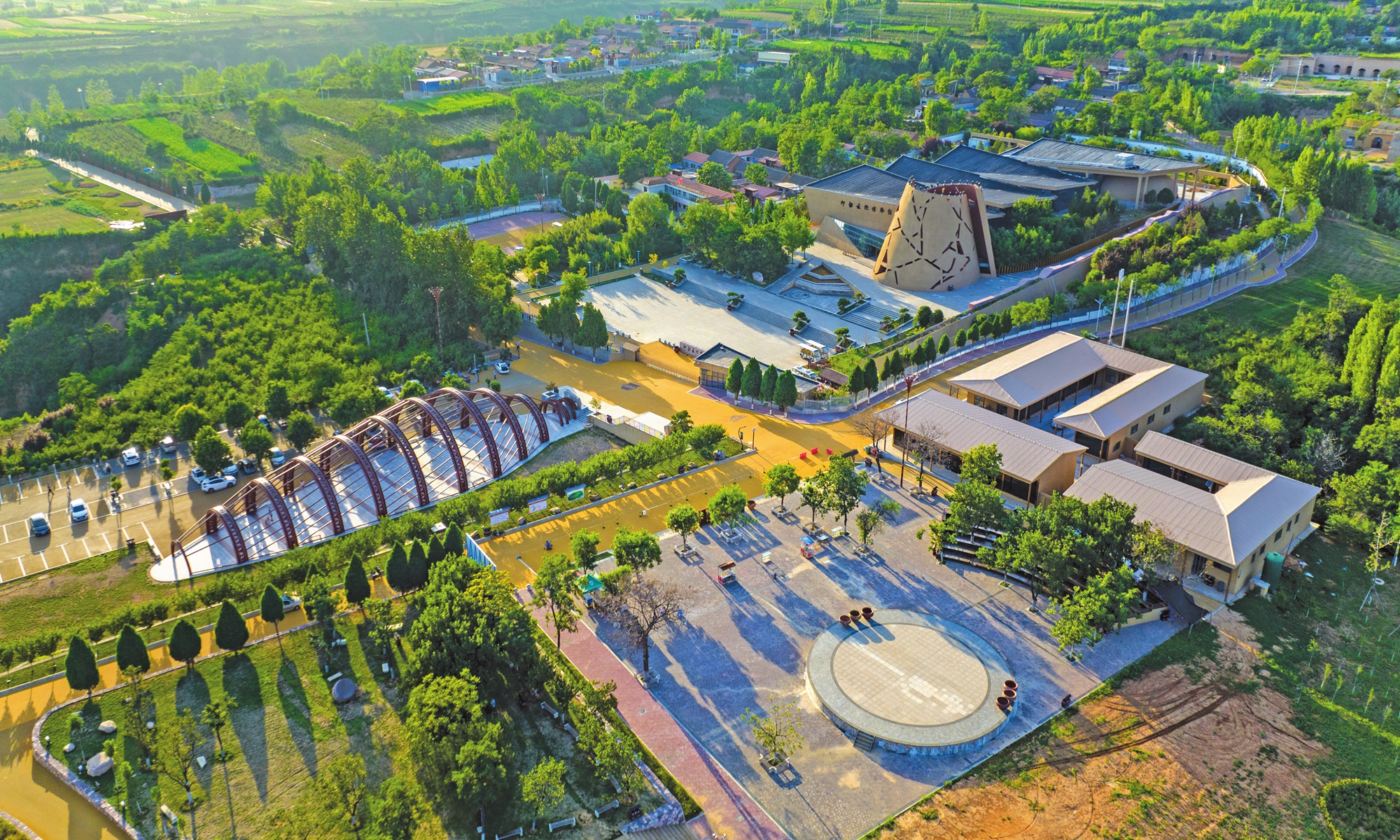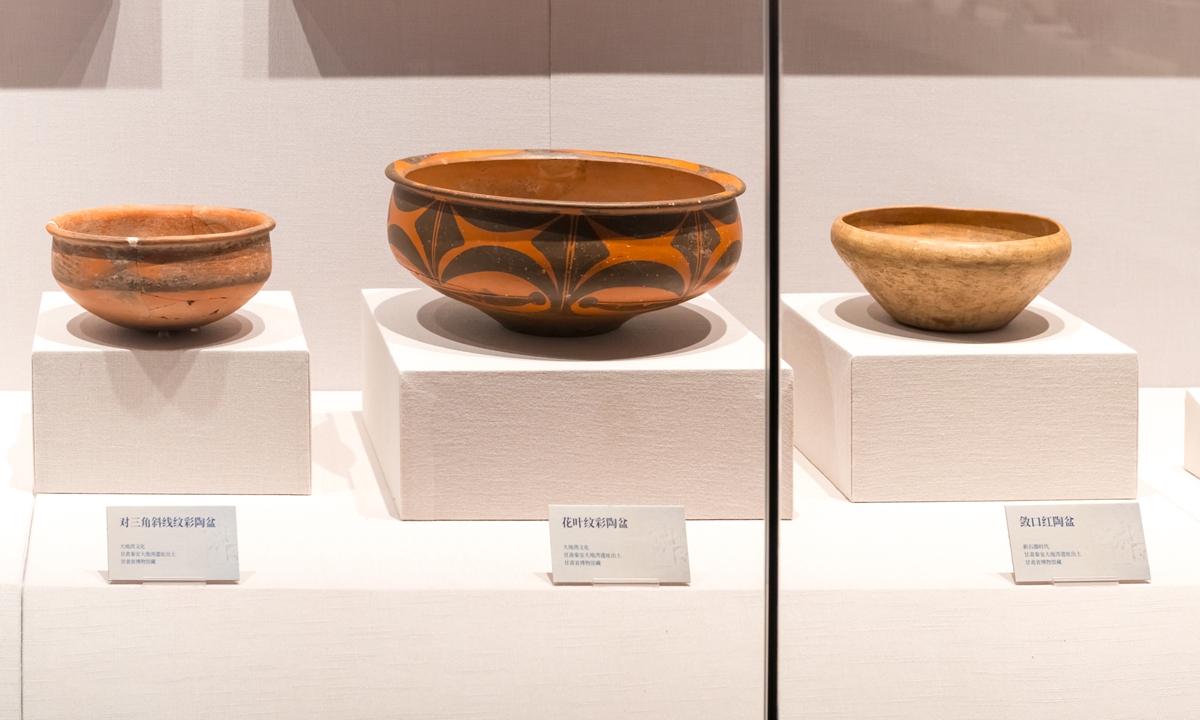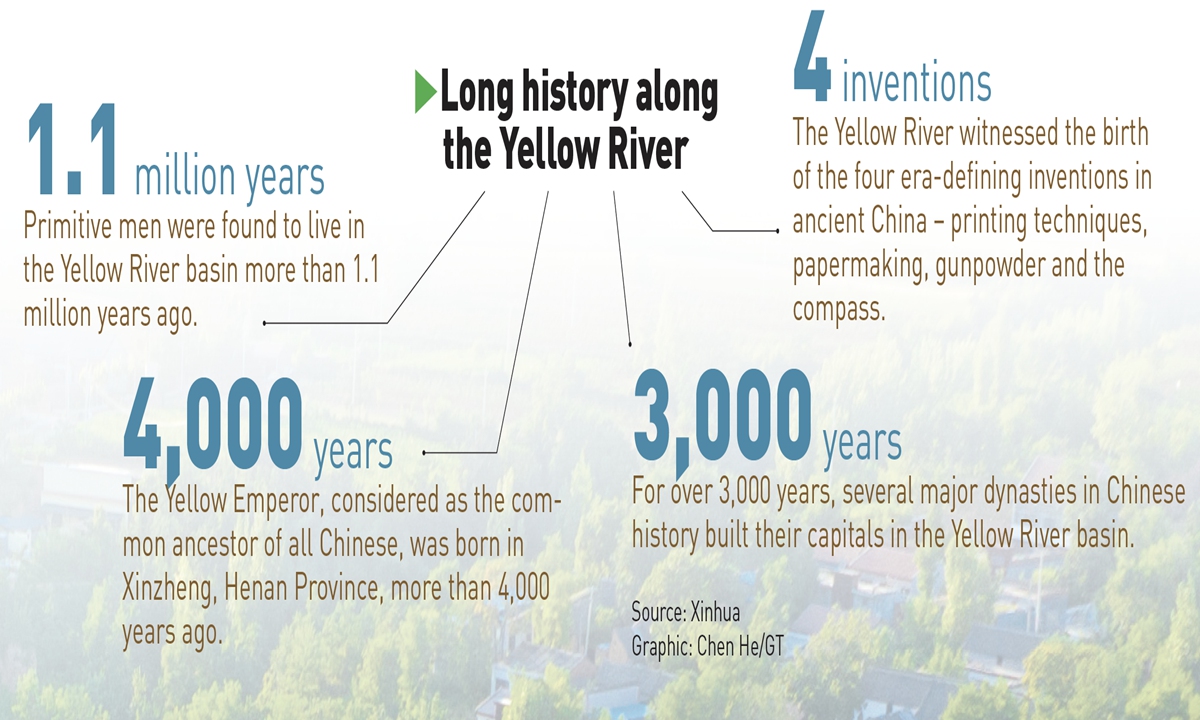
Yangshao Village National Archaeological Park in Mianchi county, Central China's Henan Province Photo: IC
Editor's Note: The Yellow River is regarded as the "Mother River" of the Chinese nation. For thousands of years, its basin has been a political, economic, and cultural hub in the long history of the Chinese civilization. Today, the 5,464-kilometer-long waterway feeds 12 percent of China's population, irrigates 17 percent of all arable land, and supplies water to more than 50 large and medium-sized cities.
Because of its incomparable historical, cultural, and economic significance, together with its impact on the environment, great efforts must be brought to bear in the protection of the river and its basin. The Global Times will publish a series of stories to showcase the progress of development along the Mother River, and the people's love for and happiness tied to the ancient waterway.
In this third installment, we introduce the Yangshao culture, a significant source of Chinese Civilization, which started, evolved, and was spread across broad regions along the Yellow River basin is still a source of early Chinese cultural information to us today.

Prehistoric painted pottery exhibits Photo: VCG
Nearly a century ago, excavation activities began in a small village called Yangshao in Central China's Henan Province, an expedition that would unexpectedly become an epoch-making moment in China's archaeological history.
Before that, field archeology was virtually nonexistent in the country. In 1921, the first excavation expedition at the Yangshao village site, which is in Mianchi county, marked the birth of Chinese modern archaeology.
The name of China's first-known Neolithic culture, the Yangshao culture, was also derived from the site.
A century of remarkable archeological expeditions and discoveries in China has not only demonstrated the remarkable achievements of the Chinese civilization, but also charted the path taken to the Chinese nation and Chinese civilization as a pluralistic and united conglomeration.
As the most important representative of neolithic Yellow River culture, the Yangshao culture is front and center in the entire Chinese prehistoric culture as an important historical witness to Chinese civilization's diversity and unity.
Exploring the origin of the Chinese civilization is so important that Xi Jinping, general secretary of the Communist Party of China (CPC) Central Committee, in May urged efforts to advance the study of Chinese civilization amid a push to enhance people's confidence in the Chinese culture.
The long-standing and rich Chinese civilization is the foundation of contemporary Chinese culture, and a treasure trove inspiring cultural innovation, Xi said while addressing a group study session of the Political Bureau of the CPC Central Committee on a national research program dedicated to tracing the origin of the Chinese civilization.
He called for a better understanding of the 5,000-plus-year history of the Chinese civilization to strengthen historical awareness and cultural confidence of the Party and society in the joint pursuit of national rejuvenation.
The first dawn light of Chinese Civilization"We couldn't prove the existence of Neolithic cultures in China until we discovered the Yangshao culture, evidence of China's rich Neolithic culture," Yang Shuanchao, vice director at the Yangshao Culture Museum said proudly when talking about the importance of the archaeological and cultural discovery.
"After a century of excavation and research, we found evidence that the Yangshao culture spread along the Yellow River. Moreover, findings suggest that the Yangshao culture enjoyed prosperity, had the largest influential area, and possessed the most complex artifacts of all the Neolithic cultures," Yang, also a research fellow at the Chinese Academy of Social Sciences, told the Global Times.
Originating around the middle reaches of the Yellow River, the Yangshao culture is considered an important stream of Chinese civilization and is widely known for its advanced pottery-making technology.
"The Yellow River birthed the Yangshao culture. Based on archeological findings, the Yangshao culture was centered around the Yellow River before spreading. Current archeological evidence shows that the Yangshao culture was centralized within the Shanxi-Henan junction, which also is the boundary between the Yellow River and the Weihe River valley."
"The Yellow River is both the birthplace of the Yangshao culture and the cradle of Chinese civilization," he said.
Archeologists have been identifying relics by era in over 7,000 sites scattered across the Yellow River basin.
He introduced that the relics have been found in a large area - from the south in the Dongting Lake area, to the north along the Great Wall, from the west along the border of Gansu and Qinghai in northwestern China, and to the east in Hebei Province near Beijing.
"To learn the source of Chinese civilization, you must first study the Yangshao culture. It is the most important component in understanding the dawn of Chinese civilization," Yang concluded.

Source: Global Times
Well conserved and to be studied more
In October 2021, the Yangshao Village national archaeological park in Mianchi county, Central China's Henan Province officially opened to the public.
Before that, the Yangshao Culture Museum showcased Yangshao cultural finds to the public for a decade. It exhibited hundreds of cultural relics from the Yangshao cultural sites in Henan Province.
After the first excavation in the 1920s and 1930s, China commissioned a second and third excavation expedition at the Yangshao ruins in 1951 and 1980 respectively.
The fourth archaeological excavation expedition at the Yangshao Village site began on August 22, 2020, and is still in progress, the Xinhua News Agency reported.
After extensively studying the Yangshao culture, archeologists still continue to find various archeological gems in each new relic.
Archeologists who are studying about Shuanghuaishu relic in Zhengzhou, the capital of Henan in recent years, for instance, a ruin belonging to the late Yangshao cultural period 5,300 years ago, found astronomy, jade, silk, and rammed earth walls in the ruins, Yang noted. Such discoveries are evidence that traces inventions in ancient times back to the Yangshao period.






